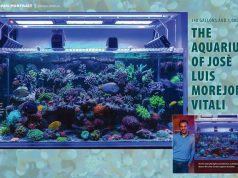
Josè‘s aquarium, better known as Jm_reefer, is something absolutely phenomenal, and for the first time I was able to measure the incredible light output of 1000 PAR on corals inside a marine aquarium.
This article is also available in: Italiano
We were lucky enough to be able to meet Jm_reefer at his home in Milan, Italy, where he showed us two wonderful aquariums, although today we will present only one of them. The so-called main one. We are talking about an aquarium that measures 125x70x60(h) cm, with a total capacity of 525 liters gross and 470 liters net as Josè is keen to point out.
A spectacular aquarium that has so many incredible features, we have only tried to render in photography and video the beauty of an aquarium that has been able to impress us in so many aspects. Beautiful and peculiar corals, management different from what we are used to, illuminating power that we can call unchecked to make the idea, fish of all kinds and colors, lots and lots of corals, unbridled passion. In short, we just have to start to tell you about this beautiful aquarium and why we named Josè Mr 1000 PAR.
Our video of Josè Jm_reefer’s marine aquarium
Get to know Josè aka Jm_reefe better
Jm_reefer is the nickname of Josè Luis Morejon Vitali, by which he is extremely well known on Instragram, having more than 15,000 followers at the moment of writing. Josè is 28 years old and works at Saipem (Eni) in project control and project management. He has always had freshwater aquariums, and he started his adventure in the marine world in 2019, although this aquarium we saw was born in 2021. A relatively young but spectacular aquarium.

What’s impressive about Josè is the passion he puts into this beautiful hobby of ours. A passion that strikes and overwhelms us like a river in flood. Talking about aquariums with him, as you can also hear in the video, brings out all his passion. But now let’s talk about the aquarium.
Josè’s aquarium technique
As we mentioned, the aquarium has a capacity of 525 liters gross. It is managed by the balling method operated with metering pumps. Lots of water changes and manic attention to values. High nutrients and lots and lots of light with total movement to match. But let’s look at everything in detail, not least because the technique and choices are textbook material.

All around the aquarium are the anti-salt fish guards created by Reeftek, and on which two automatic feeders have also been placed.
Mixed LED and T5 lighting
Light, we know well, is the engine of the aquarium. We will never get tired of repeating it. And for this Jm_reefer chose to use 3 Radion G5 blue Xr30 with 4 T5 ATI blue plus. A very very blue lighting and one that gave us a lot of problems in taking pictures of the aquarium, because of the strong predominance of blue tones, enhanced by the 4 T5 tubes.

But what impressed us most about the light was its power. In fact, when we measured the PARs as you can see starting at minute 16:06 of the video, we found that the entire upper part of the aquarium, where the acropora are, benefits from as much as 1,000 μmol m-2 s-1, or in other words for us mere mortals, 1,000 PARs. Measured with our Apogee Quantum Meter MQ-510 PAR meter. We had never measured such a high PAR value in the aquarium. So high that some corals at the top might even be in photoinhibition. The PAR value decreases between 700 and 500 in the center to around 300 at the bottom of the aquarium. 300 PAR is a value that many people have at the top of their reef, not at the bottom. Just thinking about this makes us realize the light output of this aquarium.

We also tried turning off the T5s, coming up with a loss of about 20% of the global PARs.
To give you an idea, we can look at the following image where the SPD value (µmol/M2/s) in a tropical sea is shown in graphics. We see that we find such a power, about 1000 PARs, at about 5 meters from the surface. A result that I personally had never measured in any aquarium.

For those of you who would like to copy Jm_reefer‘s setting, we tell you that there are 45 minutes of sunrise and 45 minutes of sunset. 6 hours with blue and white channels held at 100% and reds and limes at 5%. Then another 6 hours with only the blue channels at 100%, and with whites, reds, and limes turned off. If you have Radions you might try his setting. Altogether there are then a good 13 1/2 hours of light!

The skimmer and the return pump
It is a good idea to talk about skimmer and return pump together because the sizing of the return pump depends on the skimmer used. The skimmer used is an UltraReef Akula 200, a skimmer credited with 1,000 l/h of treated air and 1,800 l/h of treated water. The air entering the skimmer is treated by a Reeftek CO2 reactor. This accessory is used to sustain pH by removing the CO2 that would inevitably be sucked out of the skimmer. Another one of those things that everyone should have.

To handle all this water Josè purchased a Sicce SDC 9.0 credited with a maximum flow rate of 9,000 l/h and a head of 7 meters for consumption of up to 90 watts.
We have no trouble believing that, despite the head to be won in the aquarium and despite the friction in the hoses, the aquarium-to-sump exchange is greater than what the skimmer treats. Because of the way the return to the tank is constructed, which is split, we could not measure the actual flow rate.

We can only say that the system appears to be very well balanced. So far we do not detect any flaws, not even small ones. An aquarium to take a cue from, we cannot help but repeat.
Movement in the aquarium
To manage the movement in the tank Jm_reefer chose 4 AquaIllumination Nero 5 pumps. Pumps that have a very minimal footprint in the water, and yet are minimally directional. The pumps can produce 11,530 l/h of flow and operate in pairs. During the day in pulse mode and at night in random mode.

They are 100% regulated, so we are talking about 23,060 l/h alternating between the two sides of the aquarium. Remembering the gross volume of 525 liters, we can say that the movement of this aquarium is 43 times the volume of the aquarium! A value, on par with the lighting power, that is absurd! Perfect for all SPSs, as long as they are not placed right in front of the pump outlet, but also great for all LPSs with a gentle return current. Yes because, as I’m sure you know, the Nero 5 can move the water gently. And they are placed quite high up where the hard corals, especially Acropora, benefit from the strong current, leaving the lower return currents with less power.


Needless to point out, even at this juncture, an excellent choice on Josè‘s part.
Everything else in the sump
What is noticeable about the sump of this beautiful aquarium is the fact that it is tiny, and absolutely stuffed with any object. Going down to the specifics, in addition to what we have already seen, we find a Reeftek Chaetomorpha reactor, Reeftek also being responsible for the construction of the Balling vessels, and for supporting the H2Ocean P4 Pro dosometer pumps necessary for the operation of the Balling itself.
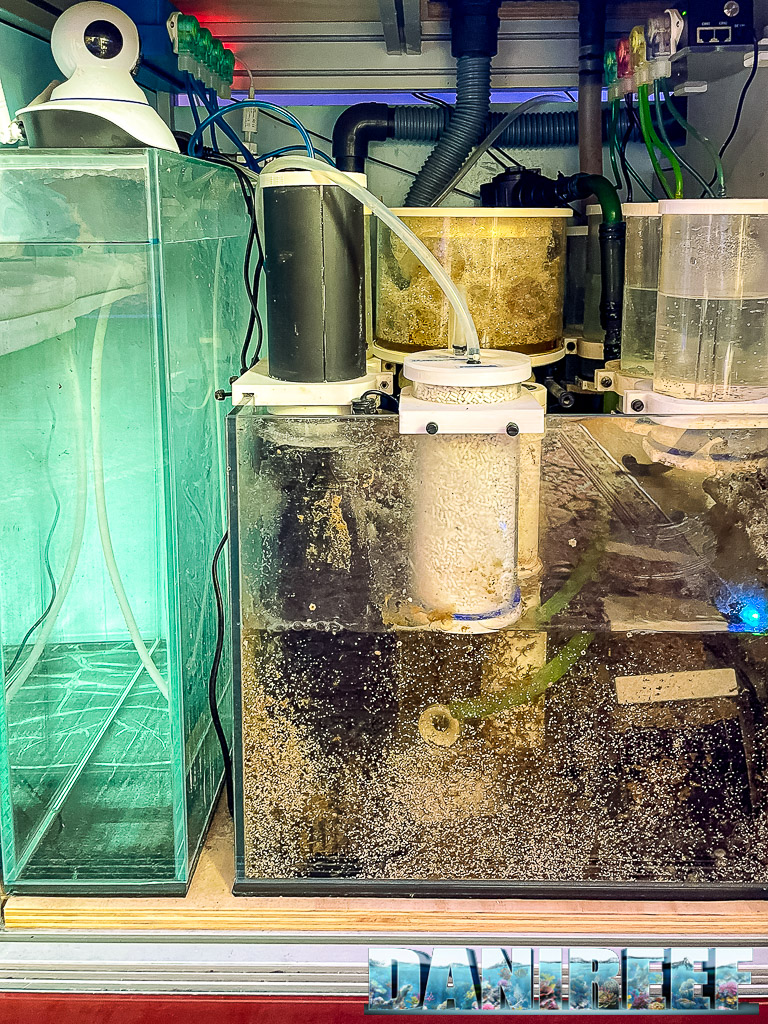
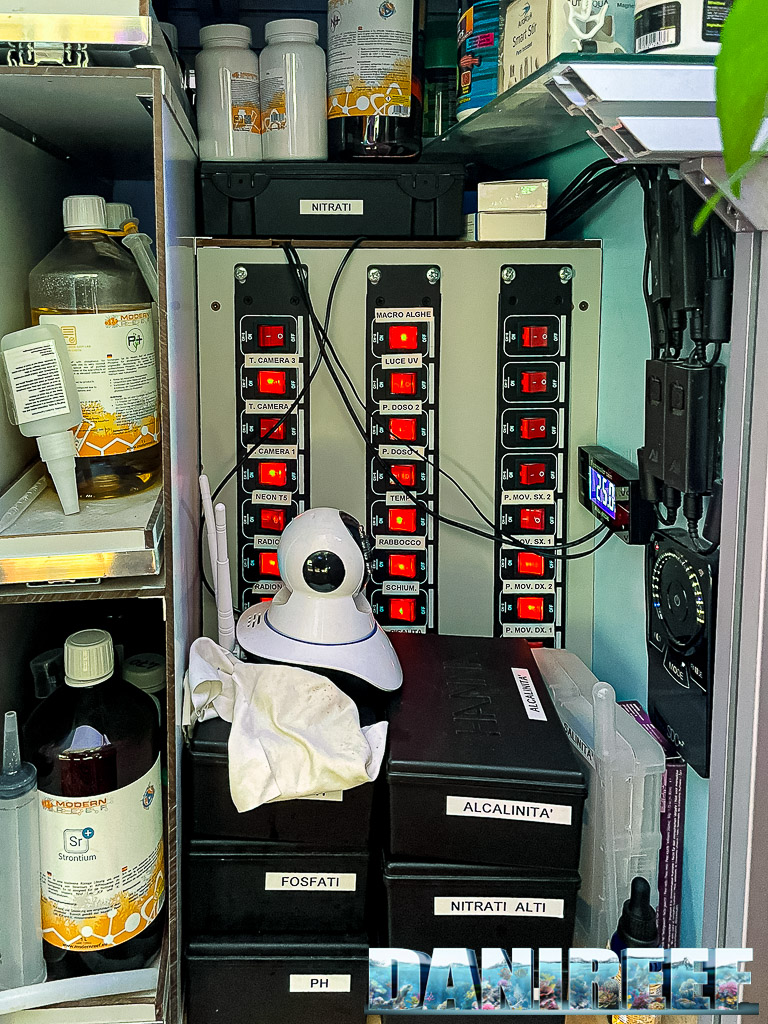
Also present is a UV lamp on for 22 hours a day, which is turned off for 2 hours while phytoplankton is dosed, Maxspect bacterial media in the sump, Aquamedic temperature control with fans and heaters. No chiller is present, but the air conditioning of the house is used.

Finally, a MaxReef metering pump for managing nitrate to be added to the aquarium.
Aquarium management with Modern Reef protocol
We have already mentioned that Jm_reefer uses the balling method for managing calcium, carbonates, and trace elements in the aquarium. However, we still have to say that Josè has fully embraced the Modern Reef philosophy and products. Both in terms of balling and the various feeds.

ALL-IN-ONE REEF KEEPING SYSTEM from Modern Reef is the complete system for supplementing and feeding corals. It consists of three parts, a complete supplementation set, and two feeding products, Complete Reef Food and Polypop.

The four supplements are: Base KH1, Base KH2, Base CAL and Base MAG. Then two KH solutions containing trace elements are added to the Calcium and Magnesium to complete the trace element spectrum. These elements are handled with the H2Ocean P4 Pro dosing pump.



It is actually a mixed balling system where amino acids and other micronutrients are added to the basic elements to complete the system. Since, for reasons of incompatibility, they cannot be mixed together, they are supplied in the form of food with Complete Reef Foods and Polypops. To the Modern Reef protocol, Jm_reefer also adds PlanctonTech‘s SpiruleXPUR HD phytoplankton daily.


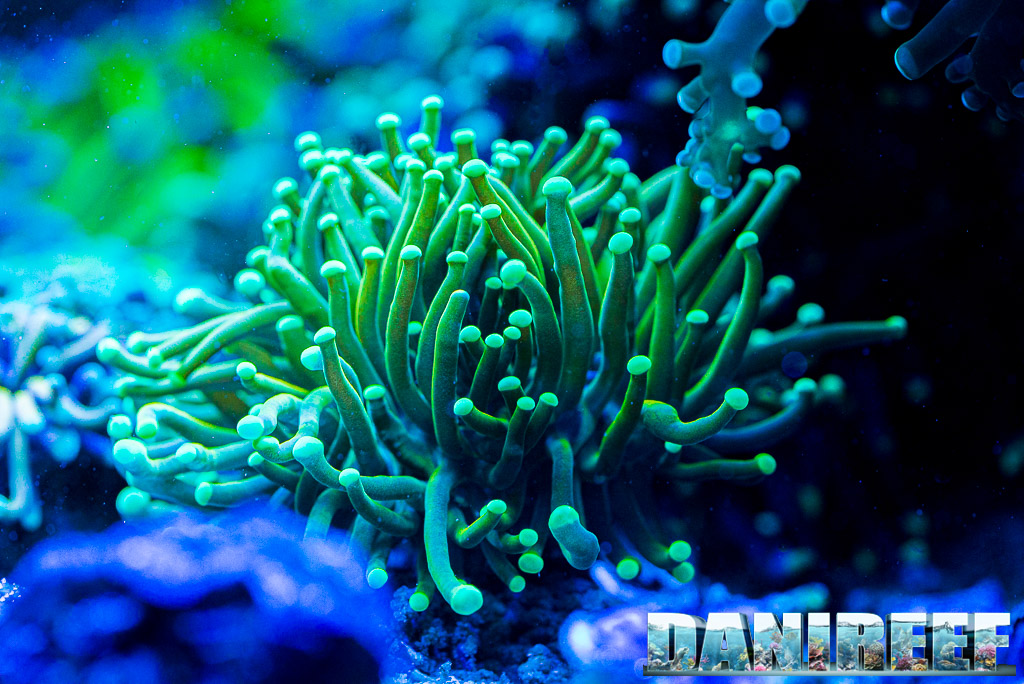
The water change is very substantial, we are talking 20% change every 15 days with salt, of course, Modern Reef and Nitribac bacteria also from Modern Reef.

To check the values each month, an ICP OES is performed on both the tank and the osmosis water, and then those trace elements found to be missing are replenished, or corrective actions are made if there are trace elements in excessive concentrations.

Water values: and here we were surprised
As we have seen, we are in the presence of an aquarium with very strong movement and crazy light. So we would have expected to find extremely low values, and instead …
| Kh | 8,2 – 8,5 dKH |
| pH | 8,1 – 8,4 |
| Calcium | 440 – 450 ppm |
| Magnesium | 1380 – 1400 ppm |
| PO4 | 0,08 – 0,11 |
| NO3 | 20 |
| Temperature | 25° |
| Salinity | 35 per thousand |
20 ppm nitrates would not have been expected in the presence of such strong oxidation, but Jm_reefer explained that nitrates are kept artificially high with a MaxReef metering pump that doses N+ by Modern Reef.

This is because Josè follows a very American-like philosophy. He has studied a lot and is convinced (how can you blame him given the aquarium) that maintaining a high nitrate value is critical for the well-being of fish and corals. And seeing the fish and corals in the aquarium, we can only agree with him. I have always been a proponent of fairly high nutrient values…but certainly not so high…
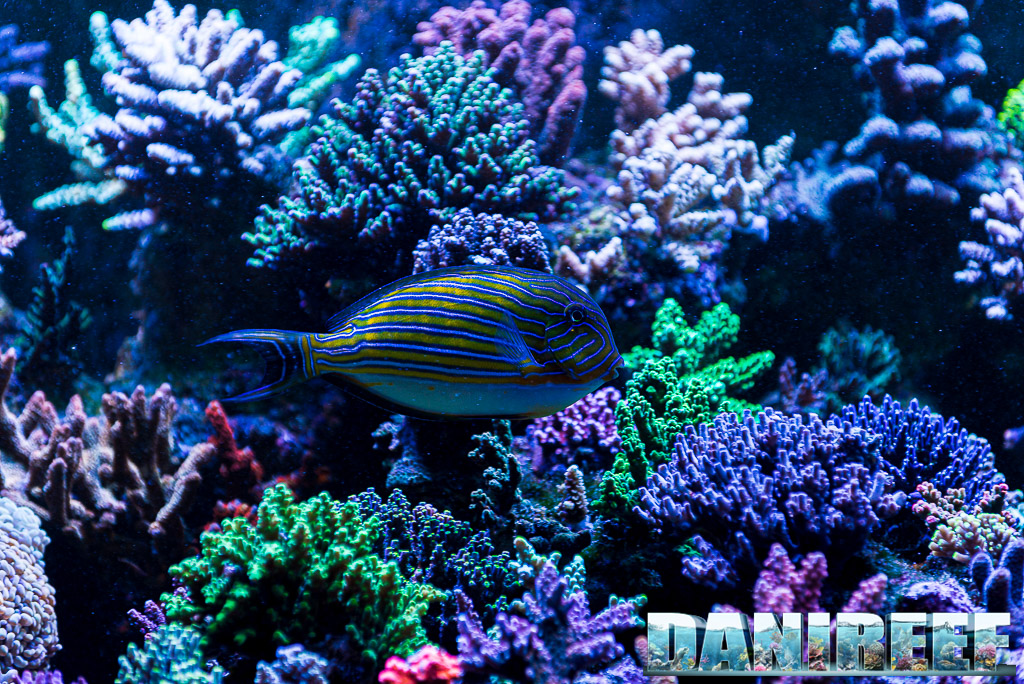
Yet looking at the photos and especially the video, I don’t think you can but agree on the health of its inhabitants.

DaniReef’s commentary
When we were shooting the aquarium, Josè asked me what I would change about his aquarium. Especially after seeing and knowing all the technique and philosophy behind it. Well as I said then, it is impossible to say anything. The aquarium runs like a charm. The equipment is top notch. The management of any aspect is maniac.

But let me remind you of a couple of numbers, 1,000 PAR and a movement equal to 43 times the volume of the aquarium.

The raised rockery with lots of space underneath is fantastic. So much space for the fish to get in and out of the burrows very naturally.

We are in the presence of total perfection. Then we can disquisition whether some acropora might have brighter, more pastel colors if maintained with lower nutrient values. Perhaps they might have slightly better growth. But dear readers, there are more than 25 fish in 500 liters, but among them are as many as 6 surgeons: Acanthurus achilles, Paracanthus hepatus, Naso elegans, Zebrasoma xanthurum, Acanthurus lineatus and Acanthurus japonicus, 2 Centropyge, aurantia and bispinosus. One butterflyfish, Hemitaurichthys polylepis. Then Angels: Apolemichthys trimaculatus, Pygoplites diacanthus and Pomacanthus imperator. And again 6 Synchiropus, Labroides dimidiatus, Pseudocheilinus ocellatus, Halichoeres chrysus, Macropharyngodon bipartitus, Amphirion ocellaris. All rather quiet given the exuberant feeding of Ocean Nutrition Formula One, Formula Two and Formula Angel flakes and pellets dosed twice a day, and supplemented every night always with Ocean Nutrition frozen. But for more growth, what should we sacrifice? You tell me. I like it very much this way.





So difficult to really improve this aquarium. In this case I sat in contemplation and admired it.

I can only thank Josè for the beauty of his aquarium and for inviting us to see it. Truly a rare gem. The entire editorial staff of DaniReef, and Matteo who was with me during the shoot, can only join in giving our best compliments to Mr. 1000 PAR.
To be updated with beautiful photos, videos and get to know Josè better you can head to his very up-to-date Instagram channel. It is truly worth it!
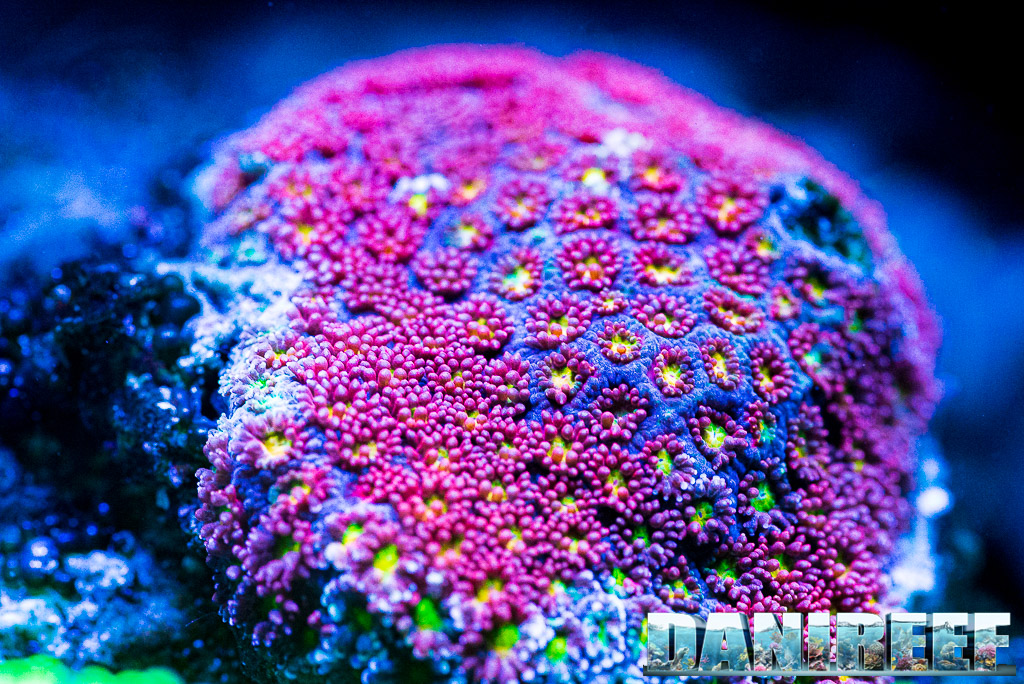
On page two you can find all the photographs we took at Jm_reefer‘s beautiful aquarium.








